- voice
- India
- car market
- staring
- stagnancy
- selling
- foreign investors
- stock market
- decline
- issues
- structural
- geopolitical
- local
- global
- auto industry
- largest contributor
- GST
- exchequer
- local
- global
- nature.
Rough Road Ahead For the Indian Auto Industry?
- By Bhushan Mhapralkar
- March 12, 2025
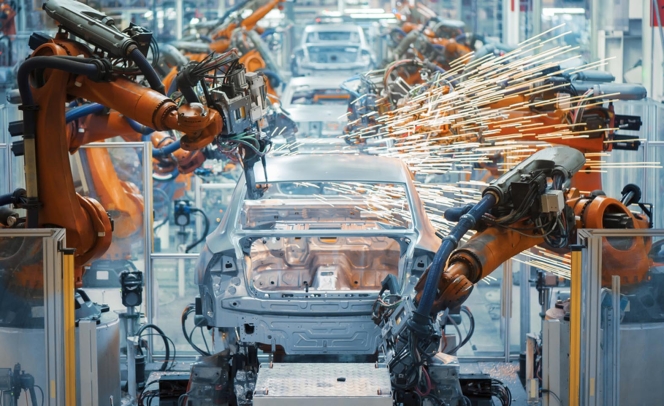
The voice about India’s car market staring at stagnancy is growing amid much selling by foreign investors in the stock market. Auto sticks of OEMs and suppliers have taken a beating lately. The reasons for stock market decline are said to be structural issues as well as geopolitical issues. In other words, they are local as well as global in their nature. The Indian auto industry – as the largest contributor of GST to the exchequer and among the highest contributor to the country's manufacturing GPD – is also quite local and global in its ways of working.
Like any other developing nation, it is a market where the scope for an increase in automobile population is bright. It is also a market that is beset by structural issues nonetheless. With 34 cars owned per 1,000 people, the country with a population estimated to be 1,463,865,525 in 2025 has ample scope for auto sales growth.
But as banks struggle for liquidity and a reduction in repo rate by the apex bank fails to reflect in the reduction of loan interest rates or equated monthly instalments, the structural issues facing the automobile industry are too stark to overlook.
Adding to the structural issues are perhaps developments such as the recent announecement by Maharashtra Government to levy six percent motor vehicle tax on premium electric vehicles. The leading industrialised state also has among the highest road toll taxes among other Indian states. The highway network in the state is among the most lacking and unsafe. Most roads in the state have either deteriorated or are under a seemingly unending period of repairs.
The state government in its 2025 budget has also announced that it has raised the motor vehicle tax by one percentage point on individual-owned non-transport four-wheeler CNG and LPG vehicles. Such vehicles currently attract a seven to nine percent tax depending on their type and price.
While electricity costs have been rising with distribution companies like MSEDCL pushing for a revision in fixed and energy charges for various categories in order to bridge revenue gap, owning electric vehicles and CNG vehicles is becoming costlier though eco-friendlier.
Attracting over 200 percent in taxes, petrol and diesel prices have been at an all-time high. A timely upward revision in toll prices is only adding further to the cost of motoring in a country where close to or more than 50 of the vehicle purchase price amounts to taxes. Spares are also taxed at a hefty 28 percent and the labour costs have steeply risen post Covid-19 pandemic.
With vehicle prices being jacked up by automakers under the pretext of rising input costs by about four to five percent if not more, the Indian auto industry is clearly under pressure to maintain its margins and stay profitable.
Against the operating costs, the foot falls in the showroom are taking longer to realise into actual sales. Discounts are gaining speed and indicative of sales losing stream in some of the segments that were until recently doing very well.
Any excitement about a rebate in Income Tax up to INR 1,200,000 – it takes over INR 1,000,000 to purchase a decent car in India today – seeming to have faded into thin air, the talk about government announced a reduction in GST taxes has gained speed. When it would actually come into effect is yet to be known but the narrative has started building. The stock market does not look excited however and the money lost by domestic investors may take a long time to come back, it seems.
As US President Donald Trump speaks about exposing India’s ‘wrong’ tariff policies in the absence of any statement from the Indian government striking out his claims, the Indian market for automobiles and other consumer goods looks destined for a rough ride. Stagnancy will be a part of the plot, the repercussions of which would stem from domestic structural issues as well as geopolitical shifts where calls like ‘China Plus One’ hold no value at all anymore.
With the entry of Tesla – which has seen its sales and stock prices plummet in many of existing markets off late – set to enter India with the government lowering tariff under pressure from the US President, the subject of too much regulation needs to be examined in terms of structural strength and the industry’s ability to be competitive. Local manufacture is also a subject that needs to be looked at as MSME sector continues to shrink and take down with it the PMI index.
Skilling is also a subject that should be looked at as engineering courses lose interest with the young in the country. A manufacturing-less economy that is also witnessing the services sector face a slowdown – again due to structural and geopolitical issues – may not spell a good omen for growth in the long run. This, particularly in the case of a country whose median age in 29 years.
China’s ‘Deep seek’ has shown how the prowess in technology can shift overnight and highly influence the economy of a nation, its stock markets suddenly. In India, the auto industry should nurture the MSME sector as much as the government should. A services alternative in terms of growth over manufacturing may not hold forth in the long-term. Manufacturing exports can shrink abruptly anytime under the shifting regulatory and other market issues in the domestic marketplace and under the shifting geopolitical situations in various parts of the world that also make lucrative export markets.
Image for representative purpose only.
Rural Demand Drives PV Retail Sales In CY2025, Barring Construction Equipment All Segments In The Green
- By MT Bureau
- January 07, 2026

The Federation of Automobile Dealers Associations (FADA), the apex body representing automobile dealers in the country, recently released retail sales data for the 2025 calendar year, reporting total registrations of 2,81,61,228 units, which was 7.71 percent higher over the 2,61,45,206 units recorded in 2024.
The apex body stated that 2025 was characterised by two distinct periods, with sales remaining muted from January to August before an upturn from September to December following the implementation of GST 2.0.
In the Passenger Vehicle (PV) segment, annual retail sales reached 44,75,309 units, a growth of 9.70 percent. Data indicated that rural markets outperformed urban areas, with rural PV sales rising by 12.31 percent compared to 8.08 percent in cities.
Two-wheeler (2W) segment saw registrations of 2,02,95,650 units, up 7.24 percent, while the Three-Wheeler (3W) and Commercial Vehicle (CV) sectors grew by 7.21 percent and 6.71 percent respectively. The Tractor segment recorded the highest growth rate at 11.52 percent, totalling 9,96,633 units. Conversely, Construction Equipment (CE) was the only category to decline, falling 6.67 percent to 74,029 units.
For December 2025, total vehicle retail reached 27,10,698 units, a 12.27 percent increase over December 2024. Inventory levels for Passenger Vehicles stood at 30–35 days, while Two-Wheeler inventory was maintained at 20–25 days. FADA noted that the year-end performance was supported by aggressive original equipment manufacturer (OEM) schemes and improved consumer sentiment.
C S Vigneshwar, President, FADA, said, “CY’25 has been a year of resilience and ultimate recovery for the Indian Auto Retail. While the first eight months were overshadowed by high interest rates, inflationary pressures and election-related caution, the final four months - post the introduction of GST 2.0 - acted as a catalyst. The reduction in effective tax rates on vehicles not only made mobility more affordable but also reinvigorated a market that was showing signs of fatigue. Rural India has emerged as the clear driver of growth this year. The double-digit growth in Tractors and the fact that Rural PV sales outpaced Urban by a significant margin confirms that the Bharat story is strengthening. We are seeing a structural shift where personal mobility is becoming a necessity in the hinterlands, supported by better crop realisations and improved infrastructure.”
Looking ahead to January 2026, FADA maintains a cautious outlook due to the high base effect from the previous year and the conclusion of year-end discount cycles. The association expects the market to enter a period of stabilisation as dealers focus on liquidating remaining 2025 stock.
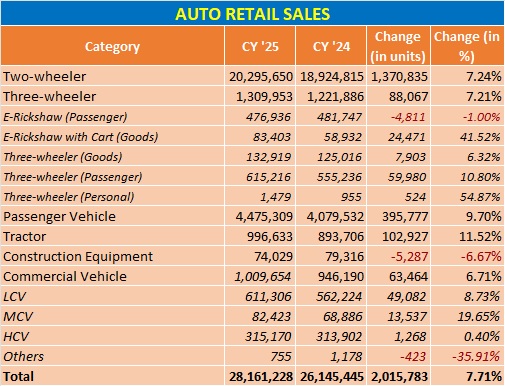
Tarun Garg Takes Charge As Hyundai Motor India’s First Indian MD & CEO
- By MT Bureau
- January 01, 2026

Hyundai Motor India (HMIL), one of the leading passenger vehicle manufacturers, has announced that Tarun Garg has assumed the role of Managing Director and Chief Executive Officer, effective today.
With this, Garg becomes the first Indian national to lead the company since its inception 29 years ago. He comes with over 32 years of experience in the automotive industry and previously served as the Chief Operating Officer of Hyundai Motor India. His appointment comes as the company prepares for its next phase of growth in India.
HMIL has outlined an investment roadmap of INR 450 billion to be implemented by FY 2030. Under Garg’s leadership, the company will focus on four pillars:
- Future-Ready Strategy: Acceleration of electric vehicles, hybrids and connected mobility.
- People and Market Focus: Support for employees and the network of dealers and suppliers.
- Customer-Centric Approach: Building trust and experience across touchpoints.
- Production and Exports: Enhancing indigenisation at plants and positioning HMIL as a hub for exports to emerging markets.
“India’s automotive industry is at an exciting inflection point, driven by innovation, sustainability, and evolving customer aspirations. It is an extraordinary honour to lead Hyundai Motor India at this defining moment in our three-decade long journey. My vision is to build on our strong foundation while accelerating HMIL’s transformation towards sustainable growth, technological leadership, and unmatched customer delight. We will continue to reinforce our commitment to ‘Make in India’ and position HMIL as a global hub for exports. Aligned with Hyundai’s global vision of ‘Progress for Humanity,’ we will strengthen Hyundai’s legacy and create meaningful mobility solutions that not only empower people but also connect communities and enrich lives. The future is ours to build and I am committed to leading HMIL with agility, conviction and purpose,” said Garg.
During his time as Chief Operating Officer, HMIL reported record sales for three years and completed an IPO in 2024. Garg also launched the ‘Samarth by Hyundai’ initiative to improve accessibility for people with disabilities.
Before joining HMIL, Garg held positions at Maruti Suzuki India, including Executive Director of Marketing, Logistics, Parts and Accessories. He is a mechanical engineer from Delhi Technological University and holds an MBA from IIM Lucknow.
Mahindra Bets On Mobility Innovation And Skills As Automotive Outlook Turns Transformative
- By MT Bureau
- December 31, 2025
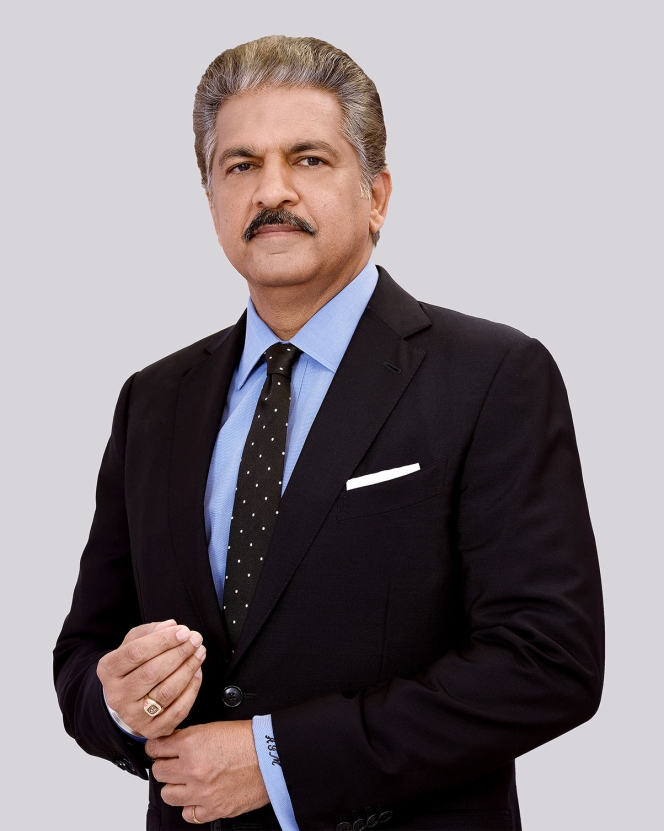
Mahindra Group Chairman Anand Mahindra has struck an upbeat yet reflective note on the automotive industry’s outlook, signalling confidence in demand, technology-led disruption and India’s growing role in shaping the future of mobility. In a year-end address to employees, Mahindra underlined that the Group’s recent performance is less about short-term numbers and more about structural shifts underway in the business and the broader industry.
The Group’s automotive operations stood out in what Mahindra described as a year of ‘market leadership and redefined expectations’.
Mahindra & Mahindra’s SUV portfolio delivered a record market share, consolidating the company’s position in one of India’s most competitive and fast-evolving segments. The performance, he suggested, reflects a sharper understanding of consumer aspirations rather than cyclical tailwinds.
Beyond passenger vehicles, Mahindra’s farm equipment business recorded its highest-ever quarterly market share, while its electric three-wheeler business retained leadership in a crowded and price-sensitive market. Together, these segments underline the Group’s diversified exposure to rural demand, urban mobility and electrification – three pillars that continue to define India’s automotive growth story.
Mahindra framed these achievements as ‘launchpads’, arguing that the Indian automotive industry is entering a phase where execution and innovation matter more than legacy positioning. Once known primarily for rugged, utilitarian products, Mahindra is now increasingly associated with modern design, connected technologies and electric mobility.
“EVs did not just change our portfolio; they changed the conversation,” he said, signalling that electrification has become central to the Group’s identity rather than an adjunct strategy.
This shift mirrors broader trends across the Indian automotive sector, where OEMs are balancing near-term internal combustion engine demand with longer-term bets on electric platforms, software-defined vehicles and advanced manufacturing. Mahindra’s message suggests confidence that Indian players can compete not just on cost, but on technology and relevance.
A significant part of Mahindra’s outlook is shaped by the rapid advance of artificial intelligence and automation. While AI is often seen as a disruptive force for manufacturing jobs, Mahindra offered a contrarian view, particularly relevant for automotive production and supply chains. He argued that AI will act as an ‘accelerator, not a threat’, enhancing the value of hands-on skills on the shop floor.
According to Mahindra, technicians, machinists and operators who can work alongside intelligent systems will become premium assets. In an automotive context, this has implications for everything from smart factories and predictive maintenance to quality control and EV assembly.
“AI can turn blue collar into gold,” he remarked, highlighting a future where digitally enabled manufacturing skills command higher productivity, dignity and income.
The Group is backing this view with investments in skilling and education. Mahindra highlighted its involvement with vocational training initiatives and engineering talent development, positioning skills as a strategic enabler for the next phase of industrial growth. This emphasis also aligns with global shifts in talent mobility, as tighter visa regimes in the West potentially create opportunities for India to retain and attract high-quality engineering and technology talent.
For the automotive industry, this could translate into stronger domestic R&D capabilities, deeper supplier ecosystems and global mandates being executed from India. Mahindra argued that the country has an opportunity to move from being a global ‘back office’ to a global ‘think tank’, especially as Global Capability Centres expand their footprint.
Looking ahead, Mahindra acknowledged that the external environment remains uncertain, shaped by geopolitical volatility, technological disruption and evolving consumer behaviour. However, he positioned uncertainty as a test of resilience rather than a deterrent. With sharper capabilities in mobility, electrification and manufacturing skills, the Group believes it is well placed to chart new growth paths.
For India’s automotive industry, the message is clear: leadership in the next decade will belong to companies that combine product innovation with talent development and technological confidence.
As Mahindra put it, “the future belongs to those who build it” — a sentiment that resonates strongly as the sector navigates its most significant transformation in decades.
Neolite ZKW Lightings Files For INR 6 Billion IPO
- By MT Bureau
- December 30, 2025
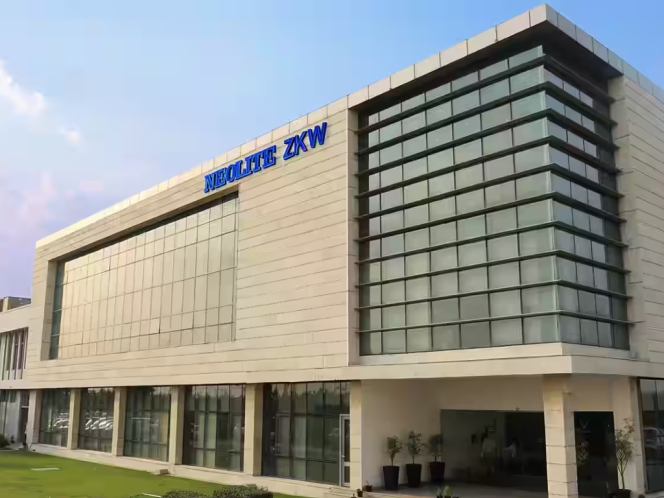
Haryana-headquartered Neolite ZKW Lightings, an automotive lighting manufacturer, has filed a Draft Red Herring Prospectus (DRHP) with the Securities and Exchange Board of India (SEBI) for an initial public offering (IPO).
The IPO comprises a fresh issue of equity shares worth up to INR 4 billion and an offer for sale (OFS) of INR 2 billion by existing shareholders, including Rajesh Jain, Neokraft Global Private and ZKW Group.
The company intends to allocate the net proceeds from the fresh issue to expansion and financial goals. This includes a new greenfield facility at an estimated investment of INR 1.5 billion in Kancheepuram, Tamil Nadu. An estimated INR 790 million towards plant, machinery and electronic expansion at current sites. Furthermore, INR 650 million towards repayment or prepayment of borrowings.
Founded in 1992, Neolite ZKW holds a 34.43 percent market share in India's commercial vehicle lighting segment for FY2025. The company maintains a strategic alliance with the ZKW Group, a subsidiary of LG Electronics.
The company operates three manufacturing units in Bahadurgarh and Pune, serving over 40 OEMs including Tata Motors, Stellantis and Daimler. Its portfolio includes 830 SKUs, with a focus on LED and electric vehicle (EV) lighting solutions.
For FY2025, the company reported INR 5.12 billion in revenue, of which exports contributed 55.08 percent share. The net profit for FY2025 came at INR 528.24 million, as against INR 155.85 million in FY2023. The order book as of 31st October 2025, stands at INR 1.71 billion.
At present, the company exports to over 50 countries, including regions in North America and Western Europe, positioning it as a significant Indian exporter of automotive components.



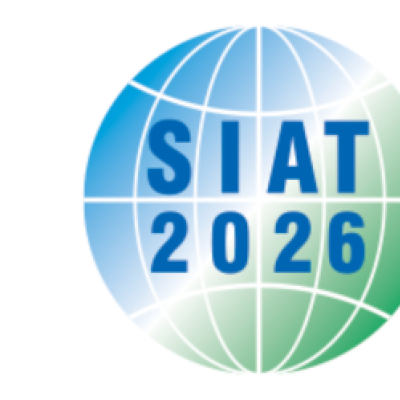
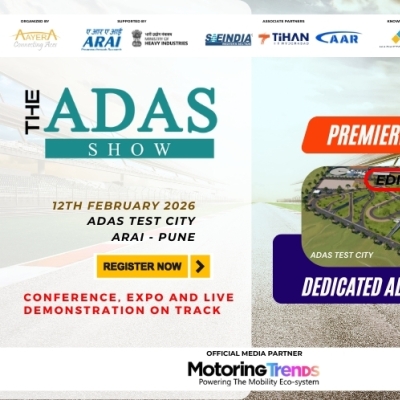
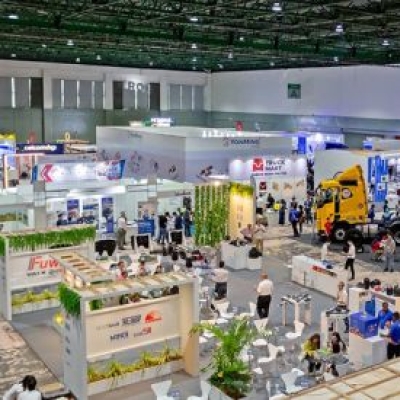

Comments (0)
ADD COMMENT